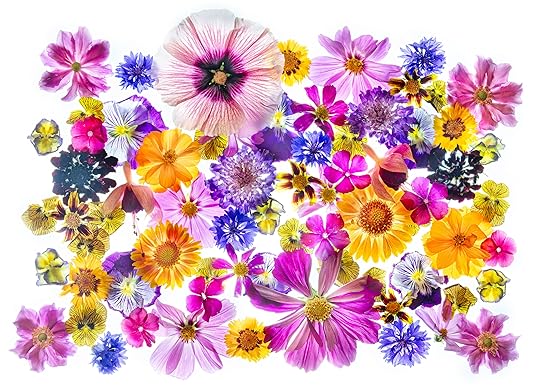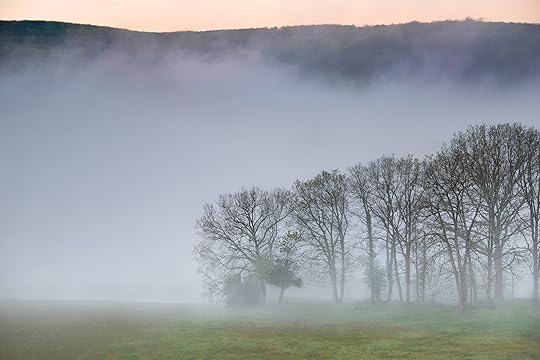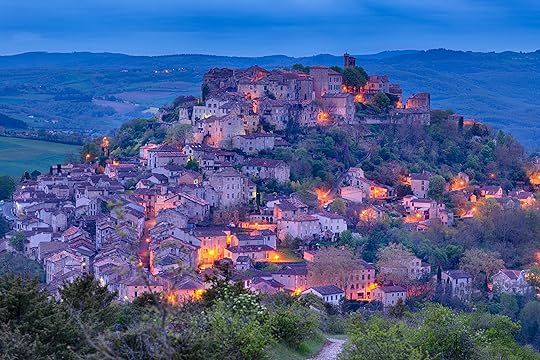Harold Davis's Blog, page 30
December 2, 2021
Off-the-Beaten Track Japan Photography Journey with Harold Davis
We are being optimistically obdurate in the face of Omicron, and planning to open Off-the-Beaten Track Japan Photography Journey with Harold Davis for registration soon. This destination travel workshop is tentatively scheduled for October 16-26, 2022. Please standby for the announcement, with full-and-further details.

Temple Flags © Harold Davis
November 16, 2021
Rubin’s Vase Optical Illusion with Harold’s Profile

Vase or Profile Inversion © Harold Davis
Rubin’s Vase is a well-known optical illusion developed by Danish psychologist Edgar Rubin known for his work on figure-ground perception. When you look at the image above, do you see a vase, or a profile that is mirrored? As it happens, the profile is mine!
I was reminded of the Rubin’s Vase phenomenon when I was researching the “Positive and Negative Space” chapter in my forthcoming book Composition & Photography: Working with Photography Using Design Concepts.
To make this image, Phyllis used her iPhone to capture my profile (perhaps I am not at my handsomest in this portrait?!). Portrait with Vase (bottom) shows this profile view, reflected on the vertical axis.
Phyllis emailed my profile to Mitja in Slovenia (via his Etsy store), who used 3-D printing to make a vase that followed the contours of my profile, shown in the center of Portrait with Vase. The vase arrived at our doorstep in a neat international mail package complete with customs declaration.
I photographed the vase with it placed lying down on a light box, to intentionally create a high-contrast image with the camera-facing plane of the vase in deep shadow (see Vase or Profile, immediately below). The L-channel of this image (using LAB color) was inverted to give the Vase or Profile Inversion version shown at the top of this story. Both images were subsequently converted to black and white to make the illusion work better.

Vase or Profile © Harold Davis

Portrait with Vase © Harold Davis
November 14, 2021
Sharing My Techniques for Photography on Black—Webinar on Saturday 11/20/21—There Are No Secrets
I’ll be sharing my techniques for Photography on Black in a live Zoom webinar on Saturday November 20, 2021 at 11am PT. The webinar will include real-time demonstrations of photography and post-production in Photoshop. There are no secrets! I’ve explained my techniques in my books; you can attend this webinar to see me actually do the work, with plenty of time for Q&A.
Click here for more info, and here to register on Zoom!

Papaver hybridium ‘Naughty Nineties’ © Harold Davis
November 1, 2021
Two of my images are 2022 USPS releases
I am pleased and honored that two of my images are part of the 2022 United States Postal Service new releases. Click here for the official press release.

Tulip Pano © Harold Davis
Tulips
The Tulips Forever stamp features a luminous, almost ethereal assortment of overlapping tulips in red, orange, yellow, purple and white against a bright white background. Similar in design to the 2-ounce Sunflower Bouquet stamp, this stamp can be used on RSVP envelopes often enclosed with wedding invitations. In addition to regular correspondence, it is also perfect for party invitations, thank-you notes and important announcements. This stamp was designed by art director Ethel Kessler, with digital photography by Harold Davis.

Sunflower Bouquet © Harold Davis
Sunflower Bouquet
The Sunflower Bouquet 2-ounce stamp features an array of sunflowers, irises and other small flowers priced to accommodate the weight of heavy invitations, oversize greeting cards and other mailings that require extra postage. The Sunflower Bouquet stamp is similar in design to the new Tulips Forever stamp, and the two form a natural pair. The stamp was designed by art director Ethel Kessler, with digital photography by Harold Davis.
Click here for the official press release.

October 30, 2021
Romantic Southwest France Workshop—Limited Space Availability
Click here for more info, here for the detailed itinerary, and here for the Reservation form.
We have limited space availability. Please contact us right away if you are interested. An early-bird discount applies through November 10, 2021!

October 29, 2021
Funhouse
When one is lost in a funhouse, as a photographer, the first question is, can one lose one’s reflection. Days subsequent, one looks for a way out.
I made this photograph from within the House of Mirrors on Petrin Hill, in Prague in the Czech Republic in 2015. It strikes me now as a fairly appropriate image for Halloween.

Hall of Mirrors, Prague © Harold Davis

October 26, 2021
Hoan Kiem Lake
In 2017, my friend Eric and I explored Vietnam. We flew into Hanoi through Taiwan, and checked into our hotel. As we explored the bustling, steamy city, we stopped on the shores of Hoan Kiem Lake for some photography, and made some images, including the one below that I recently processed for the first time.
Click here for a photo of Turtle Tower, located on an island in Hoan Kiem Lake (and visible in the distance in the photo below), and here for more about our adventure in Vietnam from the beginning.

Hoan Kiem Lake © Harold Davis

October 22, 2021
National Root Beer Float Day 2022
August 6, 2022 is National Root Beer Float Day (yes, this is a thing!). We will be holding our Photographing Flowers for Transparency workshop Saturday August 6 – Sunday August 7, 2022. We propose to honor the day and our workshop participants by serving, wait for it, root beer floats. The perfect partner for light box flower photography!

Dancing the Light Fantastic © Harold Davis
2022 Photographing Flowers for Transparency with Harold Davis (Weekend Workshop) | LIVE and IN-PERSON
Master photographer Harold Davis is well-known for his often imitated—but seldom equaled—digital images of luscious transparent and translucent flowers.
In this unique workshop offering, Harold Davis shows the techniques he uses to create his floral masterpieces. Arrangement, composition, photography, post-production will all be covered, as will Harold’s special techniques for shooting on a light box.
There is no better way to learn the floral transparency techniques that Harold Davis has pioneered. The multi-day format will give participants the chance to complete their imagery using the techniques that Harold will demonstrate, with input and help from “the master”. We will follow up with an online Zoom session for further critique and help with work.
Spaces are limited. Click here to read more and for the curriculum!

Love is a Many Splendored Thing © Harold Davis
Where: Berkeley, CA
When: Saturday August 6 – Sunday August 7, 2022
Tuition: $1195
Special Feature: We will follow-up with a Zoom webinar approximately two weeks from the workshop to showcase and critique participant work (and to help with any problems).
Workshop size: Maximum of 14 photographers
To register: Visit the listing on Meetup to register using Paypal (by RSVPing YES), or contact us for direct registration by check or credit card. Please do contact us if you need help with registration, or have any questions.
Click here to read more and for the curriculum.
Refund & Covid Policy: Refunds are available up to 90 days before the workshop (less a $100 cancellation fee). After that, no refunds unless we are forced to cancel the workshop. Please protect your investment in the workshop by buying travel insurance to cover the workshop fee and travel expenses. Covid vaccination is required to attend. We follow all health protocols in place at the time of the workshop.

October 20, 2021
Update: April 2022 Workshop to “Deep” France
Due to heavy interest, we now have only limited availability on the Photographic Tour to Romantic Southwest France (April 27 – May 5, 2022). There are no more single rooms (we are taking a waiting list for singles). We have only two rooms left for a couple (or two people traveling together). If you are willing to consider a roommate, we can help connect you.
The early-bird discount still applies until November 10, 2021. Thanks to all for interest and support!

Near the Mas de Garrigue © Harold Davis

October 18, 2021
Announcing Romantic Southwest France (April 27-May 5, 2022): Photography in the Lot River Valley
We are pleased to announce a new destination photo workshop to southwestern France in the spring of 2020. Join a small compatible group of photographers in a 15th Century fortified farmhouse in the lush countryside of southwest France in the springtime. We will be hosted at the Mas de Garrigue, a 15th century fortified farm near the Lot River in the heart of romantic southwestern France. This is an area of gardens, gourmet French home cooking, ancient medieval villages and castles, and a photographer’s and walker’s paradise.
Click here for more info, here for the detailed itinerary, and here for the Reservation Form. A $500 early-bird discount applies for enrollment by November 10, 2021. Please keep in mind that this destination photo workshop is filling fast! Our group is already partially formed. So if you are interested, please don’t delay.

Confluence of Two Rivers © Harold Davis
Our group will meet at a special hotel in Toulouse in the southwest of France on the afternoon of Wednesday April 27, 2022 where we will be spending the night. After exploring Toulouse, we’ll transfer by private mini-bus to Mas de Garrigue in the area of Calvignac on the banks of the beautiful Lot River. Along the way we will stop at the historic city of Albi, with its ancient bridge over the Tarn River.

Morning Mist © Harold Davis
The Lot is a region of beautiful rivers and valleys, stark cliffs with ancient clinging villages, sacred pilgrimage routes, stone bridges, churches that date from the era of the crusaders, beautiful flowering gardens, and much more.

Cordes sur Ciel at Dawn © Harold Davis
Click here for more info, here for the detailed itinerary, and here for the Reservation Form. A $500 early-bird discount applies for enrollment by November 10, 2021.





